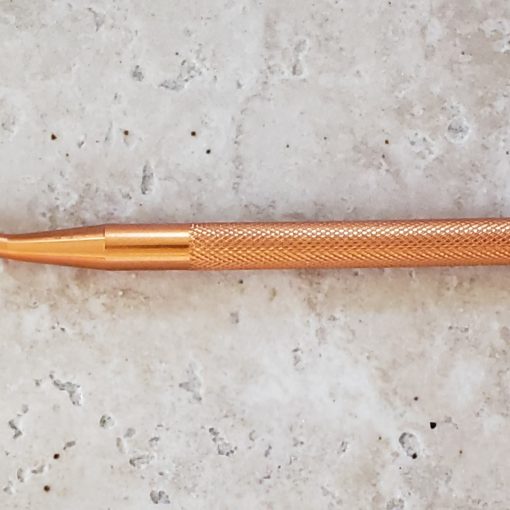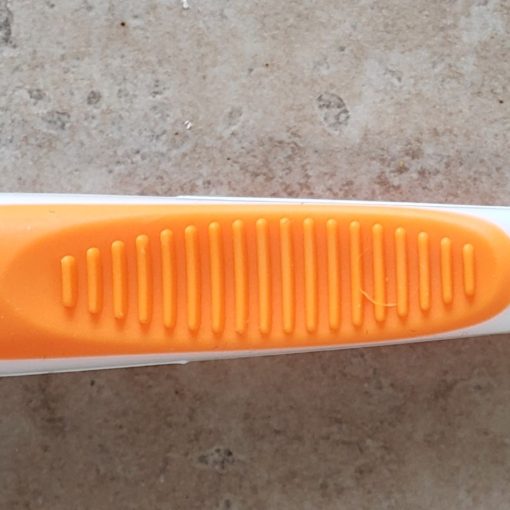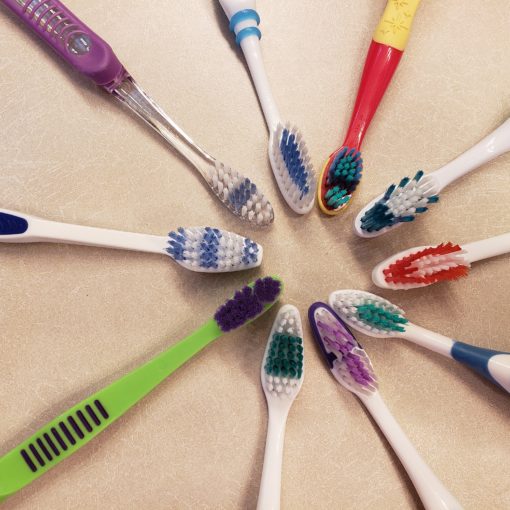Ingredients in Toothpaste
There are many ingredients in toothpastes which I didn’t even know what most of them were for before I wrote this blog. This was an eye opener for me to see this extensive list of ingredients. There’s usually one or two active ingredients supplied with an average of 15 inactive ingredients. Active ingredients are the part of a substance or compound that produces its chemical or biological effect. Basically, it’s the portion of the product that has the therapeutic effect on the body. Inactive ingredients are components of a product that do not increase or affect the active ingredient but are added in the manufacturing process to produce the rest of the product, and has no effect on the body, unless allergies are involved. Inactive components are listed by the US Food and Drug Administration as “generally safe”.
Not all these ingredients are in every toothpaste but all these ingredients I found are in the variety of toothpastes. Several of these ingredients are also used in many non-dental products, such as soap and shampoos, and have multiple purposes within their own mechanism.

Alcohol. An anti-microbial usually a small of .7% is used. I found this ingredient in Crest Complete toothpaste.Baking soda (Sodium bicarbonate). Mild abrasive and odor reducing.
Benzoic acid. Preservative inhibits growth of microbes and adjusts pH.
Blue 1 (Brilliant Blue FCF). An organic compound used as a dye. Blue 1 is used to enhance the beauty of the toothpaste. Without some color the toothpastes may look very unappealing.
Carbomer aka Polyacrylic acid. A polymer made from acrylic acid, that acts as a thickening agent.
Carrageenan. An extract from red seaweed. Used as a thickening agent.
Cellulose gum. A thickening agent used for creamy toothpastes.
Cetylpyridinium chloride. An antiseptic that kills bacteria and other micro-organisms. Helps prevent dental plaque and reduce gingivitis.
Cocamidopropyl betaine. A foaming ingredient derived from coconut oil which helps to emulsify and maintain consistency in flavors while the toothpaste is in the tube. It’s a chemical found in many personal care products, including shampoo, toothpaste and body wash.
Coloring agents. Such as Red, Blue Yellow. Used for appearance reason
Disodium pyrophosphate. A tartar control agent. Works by removing magnesium and calcium from the saliva to help prevent plaque from forming on the teeth.
Flavor. Intended to encourage use of the product. The most common flavors are peppermint, spearmint and wintergreen, cinnamon and bubble gum. With all the other ingredients tasting so awful, flavor is necessary for continued use.
Glycerin. Maintains moisture levels preventing toothpastes from drying out and helps with preservation. Glycerin contributes to a good mouth feel and improves flavor. May be derived from animal fat.
Hydrated silica. A mild abrasive used in gel toothpastes, frequently combined with calcium carbonate to remove plaque.
Hydrogen peroxide. Whitening agent along with reducing bad breath and decay causing germs.
Mica. Mild abrasive to help polish the tooth surface. It’s the sparkle in the toothpaste.
Microcrystalline cellulose. Thickening agent or binder to stabilize the toothpaste formula.
PEG-6, 12, 20, 23 (polyethylene glycol). Used for humectants and solvents. Prevents water loss and stabilizes the toothpaste. Helps to prevent settling or clumping.
Pentasodium triphosphate. Tartar control agent. This ingredient interacts with the minerals in the saliva and prevents them from building up on the teeth causing tartar.
Poloxamer 407. Used as a surfactant allowing oil-based ingredients to be dissolved into a water-based solution. This ingredient keeps the water in the toothpaste.
Polysorbate 80. Binds the ingredients in the toothpaste, so they don’t separate. It also acts as a surfactant.
Potassium nitrate. It helps to prevent cavities and reduces the pain from sensitivity. Usually in the sensitivity toothpastes as a main ingredient, clinically proven to reduce dentin (tooth layer under the enamel) hypersensitivity. Sensitivity is caused when dentin is exposed and the tubules that run from the outer layer of the tooth into the nerve are opened and unprotected. Potassium nitrate ions depolarizes the nerve which desensitizes them to stimuli.
Propylene glycerol. Wetting agent to prevent water loss and a surfactant.
PVM/MA copolymer (Methyl Vinyl Ether/Maleic Anhydride). Used as a binding agent.
Saccharin. Non-caloric sweetener for sweetness to improve taste and to mask the bitterness of the other ingredients.
Sodium benzoate. An anti-microbial preservative which prevents the build-up of micro-organisms in the toothpaste.
Sodium carbonate peroxide. Used as a whitener.
Sodium fluoride. Sodium fluoride is used as an anti-cavity and desensitizing agent. It enhances the strength of teeth by the formation of fluorapatite, a naturally occurring component of tooth enamel. Sodium fluoride also aids in relieving dentin sensitivity. Sensitivity is caused when dentin is exposed and the tubules that run from the outer layer of the tooth into the nerve are opened and unprotected. This can cause any stimuli from the outside of the tooth traveling to the inside of the tooth hitting the nerve and causing that instant shock. This ingredient blocks the opened tubules to provide some relief of sensitivity.
Sodium gluconate. Used as a bonding agent to assist in the solubilization of the fluoride carrier.
Sodium hexametaphosphate. A polymer that protects against calculus formation and reduces the plaque that retains on the rough surfaces of the calculus. It also helps with staining.
Sodium hydroxide (lye). Used to neutralize the acidic pH imbalance caused by other ingredients in toothpaste. It becomes very alkaline when dissolved in water.
Sodium lauryl sulfate (SLS). A detergent to create a foaming action that helps increase the solubility of plaque and accretions during brushing. The main purpose is to generate a foam to coat the teeth and provide a constant layer of the toothpaste solution between the teeth and gums.
This ingredient is a common allergen. In some people SLS may promote canker sores or other mouth ulcers, by stripping away the protective lining of the mouth leaving the underlying tissues irritated and prone to break out in canker sores. Sodium lauryl sulfate may also cause tissue sloughing.
Sodium lauroyl sarcosanite. A cleanser and foam booster.
Sodium methyl cocoyl taurate. A sodium salt of a coconut fatty acid used primarily as a cleansing and foaming agent.
Sodium phosphate. Used as an abrasive to remove stain and plaque.
Sorbitol. Natural sweetener for the sweet taste and humectant to trap the water in the toothpaste to make it easier to squeeze it out of the tube. Also, a texturing agent.
Stannous fluoride. An anti-bacterial, anti-cavity agent. Converts the calcium mineral apatite into fluorapatite to make the tooth enamel more resistant to bacteria-generated acid attacks. More effective than sodium fluoride in reducing cavities and controlling gingivitis. May cause staining, which can easily be removed.
Sucralose. A non-calorie artificial sweetener. Used for taste, to mask the awful taste of the other ingredients.
Tetrasodium pyrophosphate. Acts as a tartar control agent to help remove calcium and magnesium from saliva, preventing them from sticking to the teeth.
Titanium dioxide. Inorganic compound used as a colorant. It provides the bright whiteness in non-gel toothpastes.
Triclosan. An anti-microbial and anti-fungal agent used to help prevent gingivitis, reduce tartar and bad breath. According to the FDA it has been proven effective in preventing gingivitis. In other products it has not been proven for health benefits. There have been “studies” that have raised some possibilities of some health risks involved in this ingredient.
Trisodium phosphate. An additive and flavor enhancer.
Water. Helps with moisture to prevent the toothpaste from drying out.
Xanthan gum. A polysaccharide used as an effective thickening agent and stabilizer to prevent ingredients from separating.
Zinc citrate. Is an anti-bacterial agent formed by a combination of zinc oxide and citric acid. Helps in reducing plaque accumulation and freshens the breath. Zinc citrate lowers the odorous bacteria in the mouth that produce the volatile sulfur compounds which cause bad breath.





